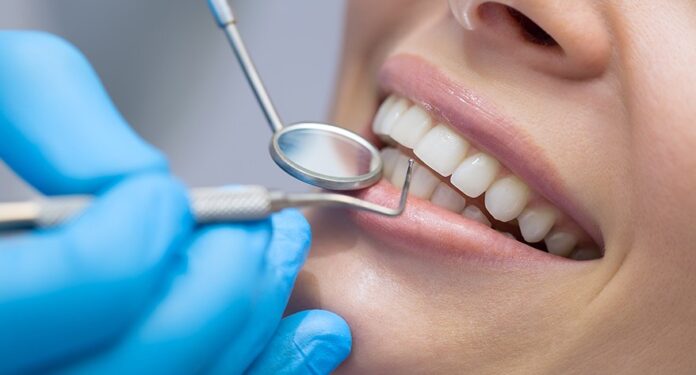Gum disease is a sneaky condition that can affect anyone, often lurking in the shadows without notice. Many people brush it off as nothing more than swollen gums or bad breath. But what starts as a minor issue can escalate into something much more serious if left untreated. Understanding gum disease and recognizing its early signs are vital for maintaining your oral health.
If you’ve ever felt concerned about your gum health, you’re not alone. Millions experience some form of gum issues, but awareness is key to prevention and treatment. Let’s dive deeper into what causes gum disease and how you can keep your smile healthy for years to come.
What Causes Gum Disease?
Gum disease, also known as periodontal disease, primarily stems from the buildup of plaque. This sticky film of bacteria forms on your teeth after eating. If not removed through regular brushing and flossing, it hardens into tartar.
Poor oral hygiene is a significant factor in developing gum issues. Skipping daily dental care can lead to inflammation and infection in the gums.
Certain lifestyle choices play a role too. Smoking or using tobacco products significantly increases your risk for gum disease.
Hormonal changes can also contribute, particularly during pregnancy or menopause when gums may become more sensitive.
Other health conditions like diabetes or autoimmune diseases weaken the body’s ability to fight infections, making you more susceptible to gum problems.
Medications that reduce saliva flow can further complicate matters since saliva helps wash away food particles and bacteria.
Early Signs and Symptoms of Gum Disease
Gum disease often sneaks up on you, making it crucial to recognize its early signs. One of the first indicators is bleeding gums. If you notice blood while brushing or flossing, take it seriously.
Swollen or tender gums can also signal trouble. Healthy gums should feel firm and comfortable; any discomfort could point toward inflammation.
Bad breath that lingers despite good hygiene practices might be another red flag. This persistent odor often stems from bacterial buildup in your mouth.
You may also experience gum recession, where your gums pull away from teeth, exposing more of their surface. This isn’t just unsightly—it can lead to further health issues if ignored.
Sensitivity when chewing or experiencing pain around specific teeth? That’s a sign too. Staying attentive to these symptoms allows for earlier intervention and potentially easier treatment options down the line.
Risk Factors for Developing Gum Disease
Several factors can increase your risk of developing gum disease. One major contributor is poor oral hygiene. Neglecting regular brushing and flossing allows plaque to build up, leading to inflammation.
Smoking or using tobacco products significantly raises the odds as well. The harmful chemicals in tobacco hinder blood flow to the gums, impairing healing.
Hormonal changes also play a role, particularly for women during menstruation, pregnancy, or menopause. These fluctuations can make gums more sensitive and prone to infection.
Certain medical conditions like diabetes weaken your immune system, making it harder to fight off infections in the mouth. Medications that reduce saliva flow can further complicate matters by creating an environment conducive to bacteria growth.
Age is another factor; older adults are at a higher risk due to cumulative effects over time. Understanding these risks helps you take proactive steps toward better oral health.
Prevention and Treatment of Gum Disease
Preventing gum disease starts at home. Daily brushing and flossing are essential. Aim for two minutes of brushing, twice a day. Floss daily to remove plaque between teeth where your brush can’t reach.
Regular dental check-ups play a critical role too. A professional cleaning every six months helps eliminate tartar buildup that leads to gum issues.
If you’re already facing symptoms, don’t panic. Several treatment options exist depending on the severity of the condition.
For mild cases, improved oral hygiene may be enough to reverse early signs of gum disease. More advanced situations might require scaling and root planing to clean below the gum line.
Medications can also aid in treatment by reducing inflammation or controlling bacterial growth. Always consult with your dentist about which approach is best suited for your needs.
Importance of Regular Dental Check-Ups
Regular dental check-ups play a crucial role in maintaining oral health. These visits allow dentists to catch early signs of gum disease, often before symptoms become noticeable.
During these appointments, professionals can clean your teeth effectively, removing plaque and tartar that regular brushing might miss. This helps prevent cavities and gingivitis from developing into more serious issues.
Moreover, routine exams help identify potential problems like misaligned teeth or bite issues. Early intervention can save you time and money down the line.
Dental experts also provide personalized advice on hygiene practices tailored to your needs. They can recommend products or techniques specific to your dental situation.
Prioritizing regular check-ups is an investment in both your smile’s appearance and overall health. Staying proactive ensures that any concerns are addressed promptly for long-lasting results.
Conclusion
Gum disease is a serious issue that can have lasting effects on your oral and overall health. Understanding the early signs, risk factors, and effective prevention measures is crucial. Regular dental check-ups play an essential role in maintaining your gum health. If you’re experiencing any symptoms or are at risk of developing gum disease, seeking qualified Gum Disease Treatment in Phoenix should be your next step. Your gums deserve attention and care to ensure they stay healthy for years to come. Prioritize your dental health; it’s worth it!
































